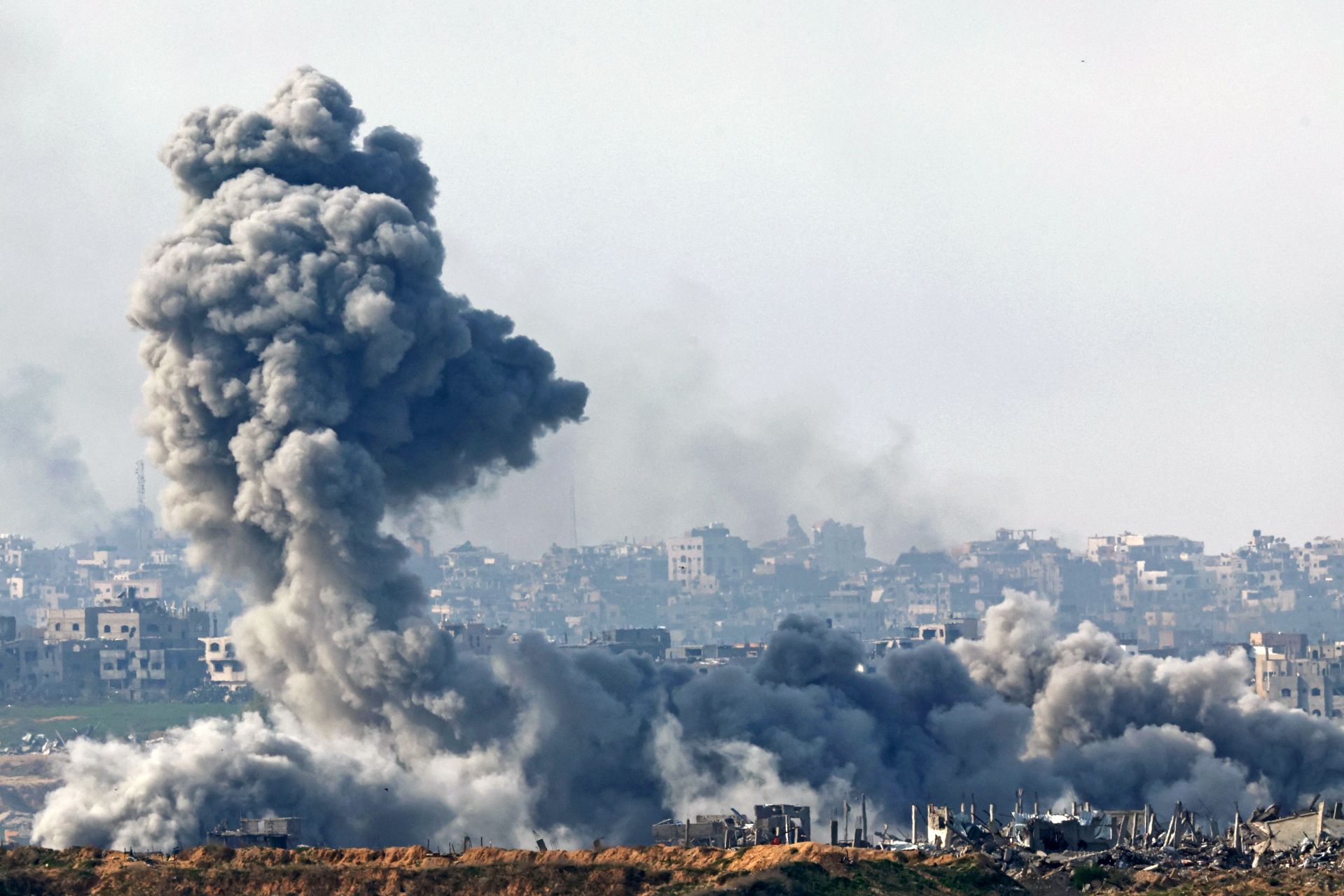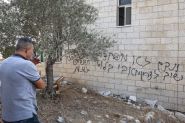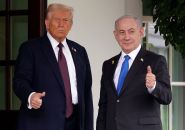- Home
- Middle East
- Gaza: What We Know About the Evolving Ceasefire Agreement

This picture taken from the Israeli side of the border with the Gaza Strip shows smoke plumes rising from explosions above destroyed buildings in the northern Gaza Strip on January 14, 2025, amid the ongoing war between Israel and Hamas. ©Jack Guez / AFP
Hamas is set to release 33 hostages held in Gaza in return for approximately 1,000 Palestinian prisoners held by Israel. This exchange marks the first phase of an evolving ceasefire agreement, according to Israeli and Palestinian sources.
Mediators from Qatar, Egypt, and the United States have intensified efforts in recent weeks to finalize the deal after 15 months of conflict between Israel and Hamas, triggered by the unprecedented October 7, 2023, attack on Israeli soil by the Palestinian Islamist group.
Qatar announced on Tuesday that an agreement could be reached “very soon,” with negotiations in Doha now in their “final stage.”
Here are the key points of the ceasefire agreement’s first phase, as revealed by Israeli and Palestinian officials and media outlets.
Hostage/Prisoner Exchange
Israeli government spokesperson David Mencer confirmed in an online briefing that Israel aims to secure the release of “33 hostages” in the first phase of the ceasefire agreement.
He added that Israel is willing to free hundreds of Palestinian prisoners in return. “Israel is prepared to pay a high price—hundreds,” he stated, referring to the number of Palestinian prisoners.
An Israeli official, speaking on condition of anonymity, had earlier stated that “several hundred terrorists” would be released in exchange for the hostages, though the final number will depend on how many of the 33 hostages, part of the first group to be freed, remain alive.
According to two sources close to Hamas, Israel is expected to release around 1,000 Palestinian prisoners, including those serving “long sentences.”
The 33 hostages are among the 94 captives still held in Gaza since October 7, with 34 confirmed dead by the Israeli Army.
One of the two sources clarified that the 33 Israeli hostages would be released “in groups, starting with children and women.”
According to the Times of Israel, Israeli officials are confident that all hostages are alive, although Hamas has not yet confirmed this.
Last week, Hamas had agreed to release 34 hostages in the first phase of the agreement, but Israeli forces recovered the body of one individual on the list, reducing the total to 33.
Israeli Buffer Zone
According to an Israeli official, negotiations for the second phase of the ceasefire agreement will begin on the “16th day” after the activation of the first phase.
This second phase will focus on the release of the remaining hostages, “including soldiers, individuals of military age and the bodies of those who have died, according to Times of Israel.
Israeli media has reported that, under the terms of the ongoing agreement, Israel will maintain a buffer zone in Gaza during the first phase. Israeli forces are expected to remain positioned up to “800 meters deep inside the Gaza Strip, from Rafah in the south to Beit Hanoun in the north,” according to a source close to Hamas.
The Israeli official declared that Israel would not withdraw from Gaza “until all hostages—both living and deceased—are returned.”
According to Haaretz, Israel will permit the movement of Gaza residents from the southern to northern parts of the Palestinian territory.
The source close to Hamas further clarified that Israeli forces would withdraw from the Netzarim corridor in southern Gaza, which divides the Palestinian territory, but would maintain a presence along the Salaheddin road, the main route connecting the north and south of Gaza.
An electronic checkpoint, equipped with cameras, will be installed along the Netzarim corridor, where “no Israeli forces will be present,” as confirmed by the source.
Disagreements
Several key issues have obstructed earlier negotiations: the duration of the ceasefire, the extent of humanitarian aid allowed into Gaza, the logistics of displaced Palestinians' return, the withdrawal of Israeli forces and Gaza’s post-conflict governance.
It remains uncertain whether any compromises have been reached on these points.
Israeli Prime Minister Benjamin Netanyahu has strongly opposed a full withdrawal of Israeli troops from Gaza and rejected the notion of Palestinian governance in the region.
The ongoing talks in Qatar are taking place with Hamas and Israeli negotiators in separate rooms. According to sources close to the negotiations, “a final round” of discussions is set to begin on Tuesday.
With AFP
Read more




Comments